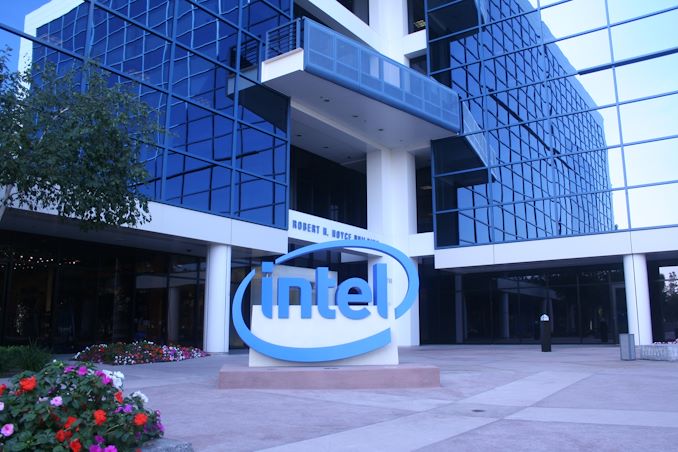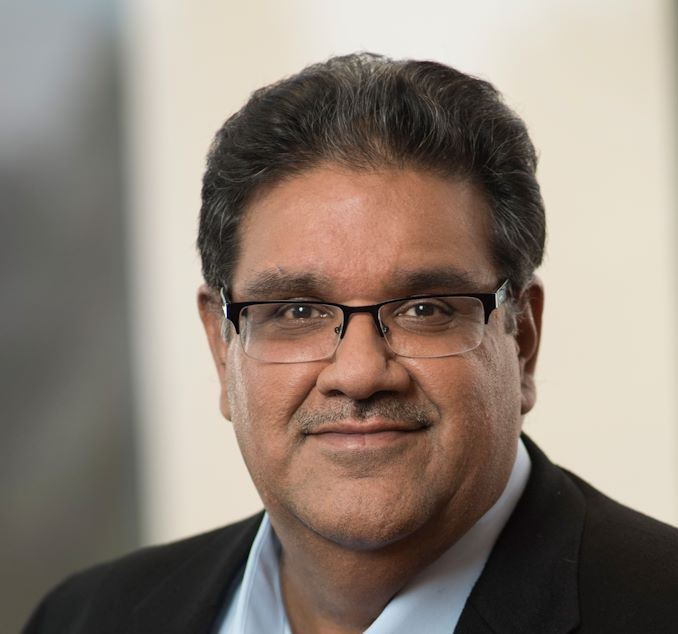Intel Reorganizes In Wake of 7nm Woes; Chief Engineering Officer Murthy Renduchintala To Depart
by Ryan Smith on July 27, 2020 5:30 PM EST
Coming in the wake of last week’s disclosure that their 7nm yields are roughly a full year behind schedule, Intel this afternoon has announced that they are reorganizing the technology side of the company. Key to this change is that Intel is breaking up its monolithic Technology, Systems Architecture and Client Group (TSCG) into several smaller groups, all of which will report directly to CEO Bob Swan. Meanwhile Intel’s chief engineering officer, Dr. Murthy Renduchintala, who had been leading the TSCG, will be departing the company at the end of next week. The reorganization is effective immediately.
As a result of this reorganization, TSCG is being broken up into five groups focusing on manufacturing and architecture. These are:
- Technology Development: Focused on developing next-generation process nodes. Led by Dr. Ann Kelleher.
- Manufacturing and Operations: Focused on ramping current process nodes and building out new fab capacity. Led by Keyvan Esfarjani.
- Design Engineering: A recently-created group responsible for Intel’s technology manufacturing and platform engineering. Led on an interim basis by Josh Walden while Intel searches for a permanent leader.
- Architecture, Software and Graphics: Developing Intel’s architectures and associated software stacks. Led by Raja Koduri (continuing).
- Supply Chain: Handling Intel’s supply chain and relationships with important suppliers. Led by Dr. Randhir Thakur (continuing).
It should be noted that while Intel’s brief announcement does not mention last week’s disclosure, the timing and resulting personnel changes are unmistakably related to the 7nm delay. Today’s reorganization is the second shuffle for Intel in as many months, as the company reorganized a number of product groups after Jim Keller departed for (honest to goodness) personal reasons.
Meanwhile, TSCG’s former president, Dr. Murthy Renduchintala, will be departing the company on August 3rd. Renduchintala joined Intel in 2015, and for most of the past half-decade has been responsible for overseeing all of TSCG’s efforts, and especially involved in the development of the company’s next-generation process nodes. Intel’s reorganization announcement makes no specific mention of Renduchintala beyond his date of departure, however it is difficult to imagine that this is anything other than Intel pushing out Renduchintala in light of their process woes. More than anything else, Renduchintala was the face of Intel’s monolithic, vertically-integrated design and manufacturing strategy; a strategy that is no more as Intel seriously investigates building parts of leading-edge processes at competing fabs.
Going forward, the task of developing Intel’s 7nm and 5nm process nodes will be led by Dr. Ann Kelleher. Kelleher gets the incredibly important (but less-than-enviable) challenge of getting Intel’s fab development process back on track, as Intel seeks to regain its crown as the world’s leading chip fab. Kelleher was previously the head of Intel’s manufacturing group, overseeing the recent ramp-up of Intel’s 10nm process. Meanwhile Dr. Mike Mayberry, a central figure in Intel’s labs who was already set to retire this year, will be staying on until then to assist in the transition.
Overall, while Intel’s reorganization is unlikely to dramatically change the company’s day-to-day operations, it’s very much the start of a new era for the company. As Intel’s ongoing manufacturing woes have driven them to look towards outside fabs for more products, the company’s traditional vertically-integrated structure is less than ideally suited for the task – and as much as Intel manufacturing would like to keep Intel-designed products within the company, Intel’s chip and architecture groups need to be able to freely look elsewhere. And this reorganization is going to be an important step in enabling that.
Source: Intel












140 Comments
View All Comments
wut - Monday, July 27, 2020 - link
oh lots of it is on him alrightSpunjji - Friday, July 31, 2020 - link
Depends whether the problem was his specific influence, or more of a corporate-culture thing. It's possible he was protecting some of the useless management at the levels below him.Igor_Kavinski - Tuesday, July 28, 2020 - link
Agree.OCedHrt - Friday, July 31, 2020 - link
He joined 5 years ago, so things we're already running late.Hyper72 - Monday, July 27, 2020 - link
Agreed, I've worked in several very large companies and they had reorgs 1-2 years, sometimes with fancy kickoff events, speeches, etc.. It often involved lots of promotions in middle management.Things proceeded as usual after that.
It's the corporate culture top-down they need to transform and that's much harder, especially because the people who have to start it are steeped in and focused on traditional business management.
surt - Monday, July 27, 2020 - link
Change is really hard. I watched the company I work for blow it with 3 top level engineering managers in a row. The fourth one finally understood what had to be done. A lot of people quit under #4 (which is what 1-3 were all afraid of) but now the company is headed in the right direction.stephenho - Tuesday, July 28, 2020 - link
Rumor said Murthy is very political, true or not, he has to go from the top.Spunjji - Friday, July 31, 2020 - link
Sometimes a lot of people quitting is what the company needs. Having terrible management and nobody quitting is a sign that the people you have are either resigned to their fate, or actively thriving under the company's poor performance...HomelessHardware - Monday, July 27, 2020 - link
Boy, you are stupid.wut - Monday, July 27, 2020 - link
You're an idiot if you don't know how badly Murthy screwed things up. Either that or you know nothing